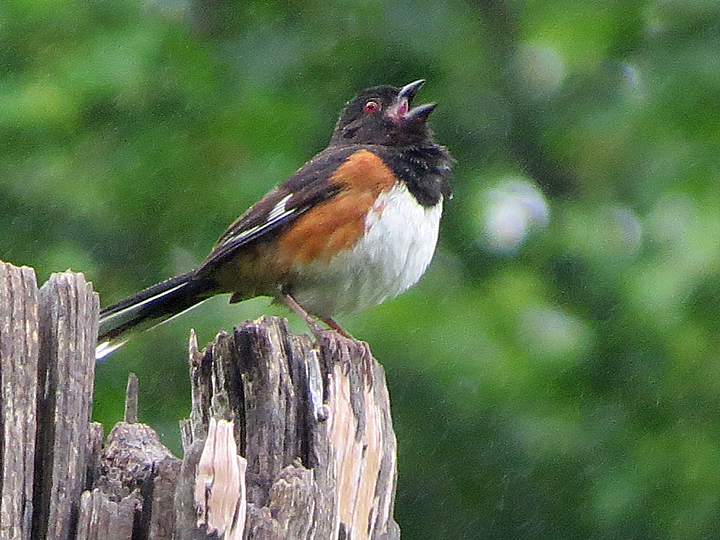Mariton: Learning Bird Songs, Part I
by Tim Burris, Preserve Manager. Photo by Carole Mebus.
Learning bird songs opens up appreciation of the outdoors like nothing else. I never knew how many Baltimore Orioles were around our yard until I learned their song. Once I learned the song, I realized they were “everywhere” and began looking for them. You wouldn’t believe a bright orange bird could be invisible, but they can disappear behind the smallest of leaves. When I learned their song, I could find them and it made sitting on the patio more enjoyable.
So, I am going to do a short series of blog posts about learning bird songs. This series won’t be about the actual songs, but more about learning how to listen to bird songs. I now hear all sorts of nuances when listening to bird songs to help me differentiate different species that sound similar. It seems impossible at first, but the more you listen and practice the easier it becomes.
To learn bird songs, you have to be able to hear them. That seems self-evident, but people process sound in a variety of ways. Some people can pick out shapes in the woods, while others are able to pick up movement or even colors that don’t seem to fit. In a similar way people process bird songs as music, or rhythms, or even as frequencies. I have always felt that Mariton’s bird walks are so successful because we have a variety of knowledgeable birders that see and hear things in different ways. So, someone is able to link up with a birder that expresses things in terms that they can relate to.
Added to how we hear, is what we can hear. Some registers and frequencies of sound are not available to some people. Whether it is from genetics, injury, or hearing loss, if you can’t hear that tone or song we have to figure out another way for you to find and enjoy this bird.

Eastern Towhee
Mnemonics is great place to start. Many bird field guides have standard mnemonics of several species. For instance, the Eastern Towhee’s song is: “Drink your te-e-e-ea” That seems simple enough, but until you actually have someone point out the song it may be difficult to make the connection from the printed version to what you are actually hearing. And quite frankly, you might not hear it that way at all. I once had a fourth grader tell me that he quite distinctly heard “brush your teeth!”
For years I had difficulty distinguishing the Tea kettle, tea kettle tea kettle of a Carolina Wren from the Witchity witchity witchity of the Common Yellowthroat. (I still have issues in early spring.) I eventually came up with an easy fix by thinking dicksissal dicksissal instead of witchity. A Dickcissel is a totally different type of bird, but just saying the word in my head made it easier for me to hear the subtle differences of the two calls. I say subtle difference, many of my birding friends don’t hear any similarity between the two species’ songs. Again we hear things differently, or to be more precise we interpret what we hear differently.
Mnemonics make it easier for most people to get started with bird songs, and birding with someone that knows the songs is handy when you start learning.
